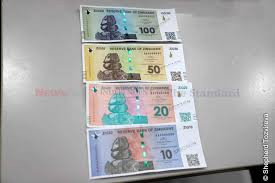
AUTHORITIES are finding it difficult to sell the Zimbabwe Gold (ZiG) currency to business and the consumers so that it becomes acceptable for use.
They have tried all tricks they can, but each time, they are hitting a brick wall.
Finding that the Zimdollar had failed the test, the authorities introduced the ZiG last April to try and stem the runaway inflation.
It held on for a few months — five to be specific — but it could not sustain its hold and in September, it went crashing.
Authorities devalued it against major currencies.
Where they went wrong, the authorities know.
Zimbabwe’s sixth attempt to introduce a currency that would hold its value against other currencies had gone up in smoke.
Today, the effects of the failed ZiG project are there for everyone to see.
- Awards target married couples
- Awards target married couples
- Mayhem as schools reject Zimdollar fees
- Forex demand continues to fall
Keep Reading
Giant retailers are struggling to stock up with some already closed shop.
They are blaming the government’s baby — the ZiG — calling it the problem child.
On the other hand, the government is accusing the retailers of mismanagement, bloated management and financial impropriety.
Government is choosing to ignore the basics of what it takes to make the new currency acceptable.
South Africa has managed to maintain its own currency, so has Namibia, Botswana, Zambia, etc.
But we are struggling and have struggled for years.
For once, the economy was steady during the government of national unity between 2009 and 2013 when the country was using a basket of currencies.
However, that was a short-term measure.
It was unsustainable.
Indeed, we needed to get back to our own currency.
But events of the past left depositors sceptical about what would happen with the money in the banks.
Back in 1997, they felt the effects of the Zimbabwe dollar devaluation after the government announced the Z$50 000 (equivalent to around US$4 167 at the time) gratuities for each of the country’s war veterans.
The dollar went down headlong.
Depositors felt the knock. They had survived the effects of the 1992 Economic Structural Adjustment Programme by the skin of their teeth, but the events of 1997 and the chaotic land reform programme at the turn of the millennium signed off the epitaph.
Anything else that came after that — named the local currency — was nothing but disaster: Bearer cheques, Agro checks, bond note, Zimdollar, now the ZiG.
In order to make the new currency circulate, central bank governor John Mushayavanhu said every business — “private, small or whatever” — would first have to have a ZiG account and point-of-sale (POS) machines before they can renew their operating licences with the local authorities.
And any idle POS machine would attract questions from the snoopy authorities.
It’s like holding a gun to the citizenry.
Bad money chases away good money, Mr Governor.
If the consumers and business do not have confidence in a currency, they run away from it.
You need to promote its use by instilling confidence in the consumers and it starts with you, the authorities.
Just state that it can be used to pay for passport applications, or buy fuel at services stations, and see the magic.
As long as there is “division of labour” with regards to which currency can buy, we will always be stuck in the same quicksand.
We need to pull ourselves out of this muck.






